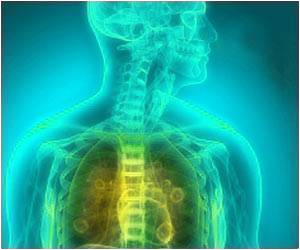Most of the lung cancers are detected when the patients become symptomatic and have late-stage disease. However, computed tomography (CT) screening for lung cancer has been reported to reduce lung cancer mortality.

A recent study published in the Journal of Thoracic Oncology (JTO), concludes that digital chest tomosynthesis holds promise as a first-line lung cancer screening tool. DT uses a conventional radiograph tube, a flat-panel detector, a computer-controlled tube mover, and special reconstruction algorithms to produce section images. Compared with conventional chest radiography, chest tomosynthesis improved sensitivity in the detection of CT-proven lung nodules.
Although it lacks the depth resolution of CT, tomosynthesis provides some of the benefits of CT at lower costs and radiation dosages. Furthermore, DT is less expensive than CT at approximately one-sixths of the cost of a CT.
Researchers from the Thoracic Surgery Unit and Department of Radiology at the S. Corce City Hospital in Cuneo, Italy studied assessed 1919 patients. Participants were age 45 to 75 with a smoking history of at least 20 pack years, without malignancy in the 5 years before the start of the study in December 2010.
A tomosynthesis was performed at baseline and a year later. The researchers conclude that, "the results on the use of DT in early detection of lung cancer are encouraging; the detection rate is comparable to the rates reported for low-dosage CT and is attained at a far lower cost and radiation dosage. "The lead author of this work is IASLC Member Dr. Alberto Terzi.
Source-Eurekalert
 MEDINDIA
MEDINDIA



 Email
Email










